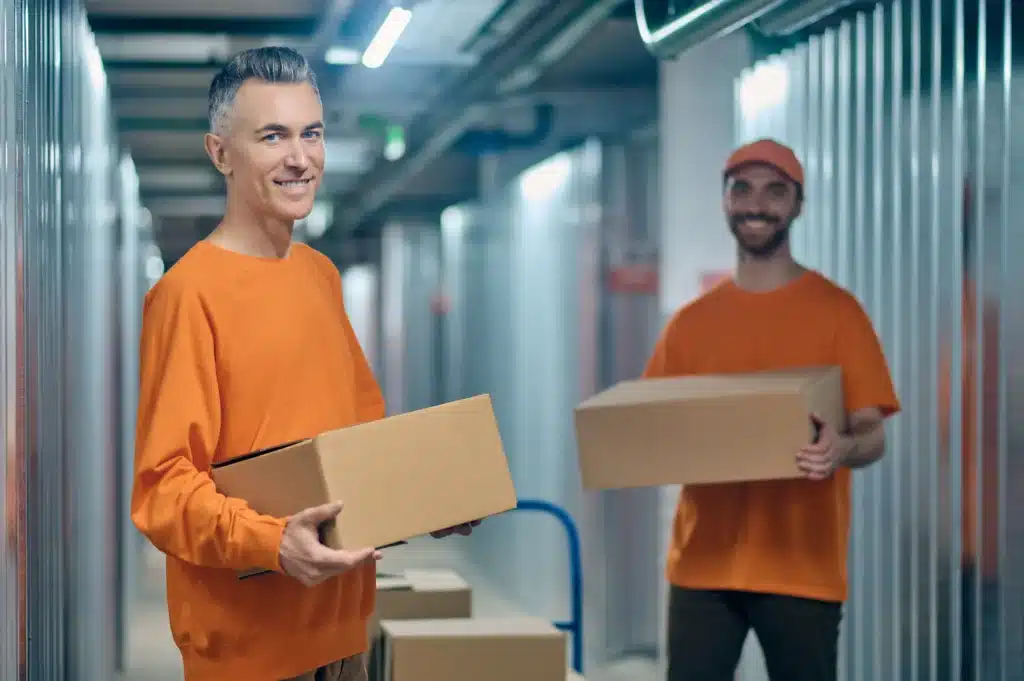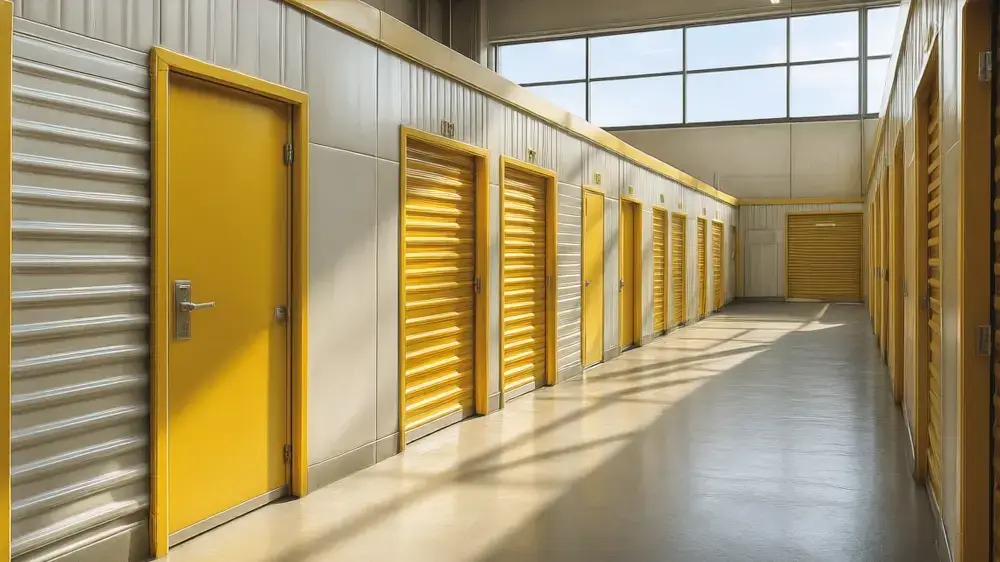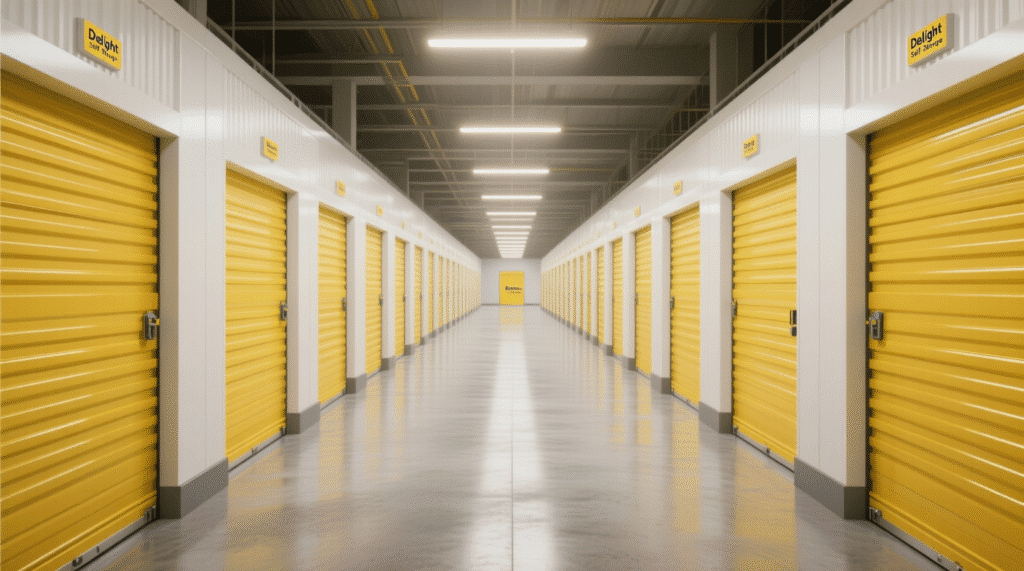Self storage UAE is a smart fix for relocations, renovations, and growing micro-inventory, but don’t assume “24/7 surveillance” equals real protection. Whether you use self storage in Dubai, storage units in Abu Dhabi, Sharjah, Ajman, RAK, Fujairah, or Umm Al Quwain, true safety depends on standards-backed CCTV, graded intruder alarms, and verified Civil Defence monitoring (Dubai RMS/Hassantuk)—plus the right storage insurance in the UAE.
This guide translates technical requirements into plain steps you can check on a site tour. You’ll learn what compliant CCTV looks like (coverage and image quality), how access control should work (PIN/card/biometric + ANPR), why layered alarms matter, and when fire alarm Dubai links to authorities are non-negotiable.
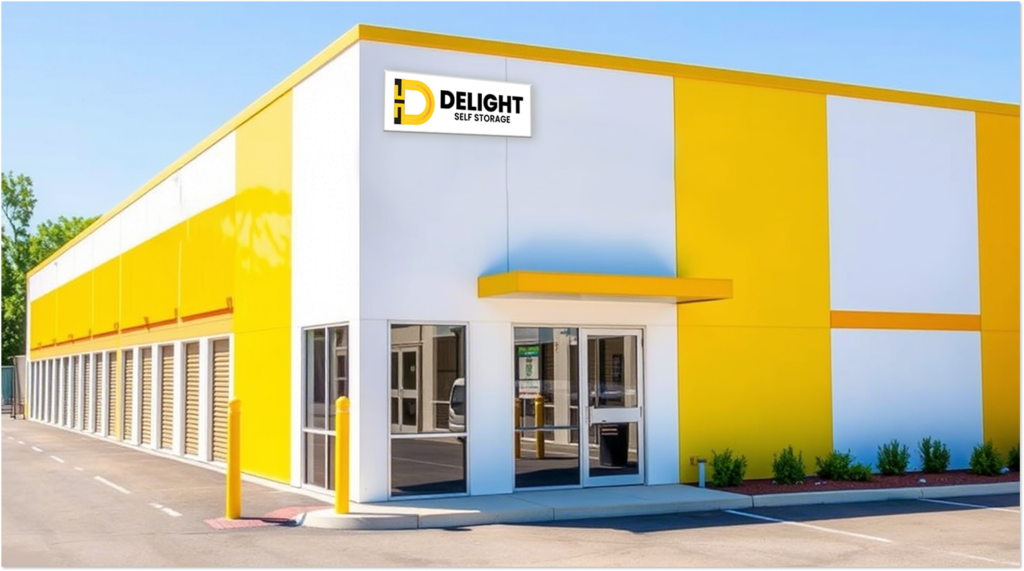
What “24/7 surveillance” should mean (not just marketing)
In Dubai, SIRA (Security Industry Regulatory Agency) publishes technical standards for security systems. Highlights that matter to self storage Dubai and warehouse-style facilities:
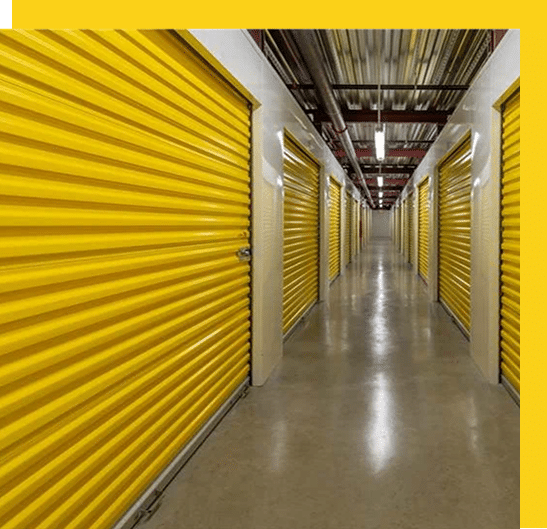
- Cameras must meet defined quality and coverage criteria (e.g., Full HD 1080p, defined “identification/recognition/observation/detection” view ranges). Monitors are specified for continuous 24/7-365 operation.
- Facilities (including warehouses) must cover entrances, exits, loading bays, and surrounding areas, often with ANPR at vehicle entries; systems must be linked for integrity/remote follow-up.
- SIRA also requires approved warning signage indicating CCTV is active.
Why this matters: “24/7 CCTV” is only meaningful if cameras are placed and specified to standards (so faces/plates are usable), feeds are retained, and there’s a trained operator who can retrieve evidence quickly. SIRA’s specs make those claims verifiable.
Also Read: Best Self Storage Companies in Dubai — Climate Control, 24/7 Access & Real-World Pricing
Intruder alarms: what to ask for
SIRA requires Grade-3 intruder systems with layered sensors (motion, vibration, drilling, glass break) plus sirens with minimum dB levels and battery backup (hours of runtime). There are also keyholder response obligations.
Ask the facility:
- Do you use Grade-3 detection with door contacts and vibration/glass-break sensors on unit corridors?
- What’s the siren dB rating, and how long will it sound on mains failure? (SIRA requires minimum runtimes.)
- Fire detection & Civil Defence monitoring (UAE-specific)
What you cannot store: The UAE Fire & Life Safety Code and emirate-level rules restrict storing dangerous goods (flammables, corrosives, explosives). Storage of such items requires special approvals and conditions—not typical storage units in Abu Dhabi or Dubai.
UAE rules that actually matter (CCTV, alarms, fire monitoring)
CCTV requirements (Dubai / SIRA)
In Dubai, SIRA’s technical spec requires Full HD (1080p) cameras and recorders, proper WDR for backlit scenes, and operational monitors designed for continuous 24/7–365 use. It also defines pixel-density thresholds for different view ranges (Identification, Recognition, Observation, etc.), signage, storage, UPS power, and even lock strength standards—so “24/7 surveillance” is measurable, not marketing. Key examples:
- Minimums: 1080p recording/live view; ≥25 FPS live; UPS autonomy for at least 30 minutes on power loss.
- Evidence quality: Pixel-density targets (e.g., ~300 px/m for Identification; ~125 px/m for Recognition), signage, and “no blind spots” guidance.
- Retention: Non-continuous motion (VMD) recording must keep at least 31 days at ≥10 FPS per camera.
- Linking: Video, intruder alarms, and ANPR systems are expected to be linkable to SIRA-approved follow-up systems, with an operator able to retrieve/export evidence.
Fire alarms & Civil Defence monitoring
In Dubai, Dubai Civil Defence runs a 24×7×365 Remote Monitoring System (RMS) that connects building fire panels directly to DCD; across the UAE, Hassantuk (MOI) links homes and buildings to a centralized Alarm Receiving Centre for real-time alerts. When you tour a facility, ask for written proof of the RMS/Hassantuk connection and current maintenance certificates.
Red flags during your site visit
“24/7 CCTV” with blind spots: No cameras on entrances/exits, lifts, corridors, and loading bays? Poor angles or grainy footage? Not SIRA-grade.
No proof of Civil Defence link: The site can’t show RMS/Hassantuk connection documents or current maintenance certificates.
Alarms without layers: You hear “motion sensors,” but there’s no mention of vibration/glass-break/door contacts, battery backup, or incident logs. (Layered, graded systems are expected in quality installations.)
Vague prohibited-items policy: If staff shrug off questions about fuels, cylinders, chemicals, or “it’s fine if sealed,” walk away.
No maintenance trail: A reputable facility shows third-party maintenance reports for CCTV, alarms, and fire systems—on request.
Insurance: the biggest gap residents miss
Many UAE residents assume home contents insurance covers items kept in storage units UAE. Policies often include “contents temporarily removed” but may exclude goods kept in storage/furniture depositories—meaning no cover if there’s a fire, theft, or water damage at the storage site. Example wording from an RSA/ENBD policy explicitly excludes storage/depository under “temporarily removed.”
Other policies do allow limited “temporarily removed” cover (often capped at ~20% of the contents sum insured), but limits/conditions vary—and older wordings may not mention storage units explicitly. Always check your policy or call your insurer.
Better approach for self storage UAE
- Call your insurer: Ask: “Are items kept in a commercial self storage facility covered? Any caps? Any exclusions for storage/depositories?” (ENBD/RSA wording, for example, limits ‘temporarily removed’ and excludes storage/depositories.)
- Get a rider or specialist policy: If your home policy won’t extend, request an endorsement or buy tenant storage insurance via the facility or your broker (limits vary by insurer).
- Document your unit: Keep an inventory, photos, and receipts; insurers expect evidence if you claim.
“Is it safe enough?” — A UAE resident’s 10-point checklist
Use this on your next tour of self storage Dubai or storage units in Abu Dhabi:
- CCTV coverage map: Entrances/exits, corridors, lifts, loading bays, and a car park with ANPR. (Matches SIRA warehouse spec.)
- CCTV quality: 1080p+ cameras with correct “identification/recognition” placement; SIRA signage visible.
- Alarm grade & layers: Grade-3 intruder system + motion, vibration, glass-break, door contacts; panic buttons on site.
- Power resilience: UPS/battery backups for alarms and key control systems; confirm runtimes.
- Fire protection: Addressable fire alarms, smoke/heat detection across corridors and units; connected to DCD RMS (Dubai) or Hassantuk/MOI, where applicable.
- Civil Defence approval: Ask to see DCD certificates and annual maintenance records from approved contractors.
- Access control: Multi-factor access (PIN + card/biometric), audit logs kept ≥1 year (per SIRA ops requirements).
- Environmental controls: Climate/humidity management for furniture, electronics, and documents (ask for data logs).
- Insurance proof: The facility’s liability covers ≠ your contents cover. Confirm tenant contents insurance or broker endorsement in writing; check exclusions for storage/depository.
- Prohibited items policy: Clear list aligned with UAE Fire Code (no fuels, cylinders, chemicals, illegal goods).
Access Control That Works: PIN vs Card vs Biometric + ANPR
Self storage Dubai facilities often advertise 24/7 surveillance, but safety depends on how access control is designed and managed day-to-day. This guide explains PIN codes, smart cards, biometric options, and ANPR (automatic number plate recognition), shows what a good access log looks like, and clarifies visitor and privacy rules for residents using self storage UAE and storage units in Abu Dhabi.
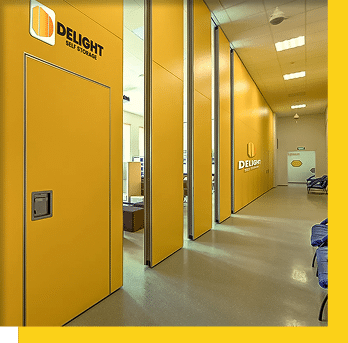
Why access control matters (beyond CCTV)
Prevention before evidence: CCTV documents incidents; strong access control prevents them. Pair 24/7 surveillance with granular door rules, time windows, and robust audit trails.
Liability clarity: Clean, searchable logs link people, plates, doors, and timestamps—vital for disputes, insurance claims, and incident response in self storage Dubai and mini-warehouse environments.
PIN, card, or biometric—what to choose?
Unique PINs: Quick to issue, easy to expire. Best for short-term movers, contractors, and box storage UAE pickups. Avoid sharing, and set time-bound windows.
Smart cards/fobs: Durable and convenient; can be lost or shared. Tie them to ID checks and require immediate deactivation when a user leaves.
Biometric (finger/face): Strong identity binding for staff and high-risk areas; confirm accuracy and obtain explicit consent.
Hybrid with ANPR: Gate opens only when the ANPR plate matches an active user and their time window; useful for self storage Dubai loading bays.
Visitor management that actually works
- Pre-register third parties (movers, contractors) with time-bound PINs and area limits.
- Require ID checks on first visit; block unknown vehicles at the gate through ANPR.
- Force escorts for non-credentialed visitors in warehouse corridors.
What a good access log looks like (fields to require)
- Timestamp (synchronized to CCTV time)
- User ID & full name (or company + site contact)
- Credential type (PIN, card, biometric)
- Door/Gate ID (e.g., “North Pedestrian 02”, “Unit Corridor L3”)
- Vehicle plate (ANPR), if applicable
- Unit/Zone (which corridor or floor)
- Operator notes/exception reason (e.g., denied due to expired code)
Privacy notes for UAE residents
- CCTV footage, ANPR plates, and access logs are personal data. Ask for a posted privacy notice explaining purpose, retention, and how to request your data.
- Expect reasonable retention (e.g., 30–90 days of logs; longer for incidents). Data should be shared only for security, insurance, or legal purposes.
Red flags: Shared PINs across multiple users; no ANPR at vehicle gates; no log retention policy; staff cannot demonstrate clip export or access-log search despite “24/7 surveillance” claims.
Box Storage UAE: Chain of Custody & Insurance While in Transit
With box storage UAE, your items move from pickup to warehouse and back to you. Safety comes from a verifiable chain of custody and clear storage insurance UAE arrangements. Here’s how to make sure CCTV, seals, and scans actually protect your belongings.
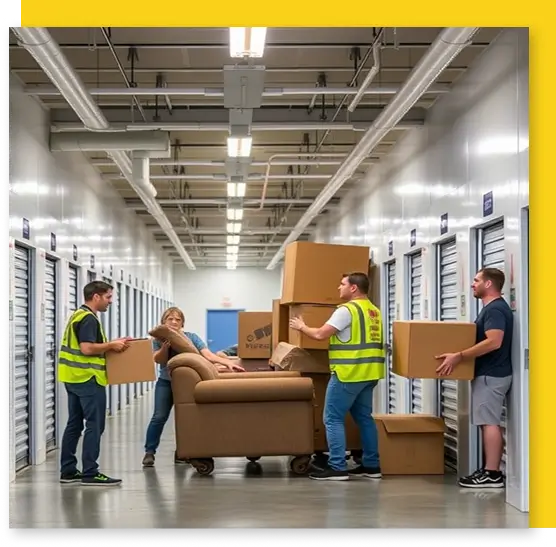
The three risk points
- Pickup at home/office: Cartons are packed, labelled, and sealed.
- In transit: Items are in a vehicle, possibly handled by multiple staff.
- In the warehouse: Boxes are received, put away, and stored until redelivery.
Build an unbroken custody trail (practical steps)Sealing
Use tamper-evident seals; record seal numbers in your job file.
- Barcode/QR scans: Scan cartons at pickup, vehicle loading, warehouse receiving, put-away, and dispatch.
- Photo evidence: Timestamped photos at pickup (carton labels visible), upon receiving, and on redelivery.
- Vehicle oversight: GPS tracking and, if offered, vehicle CCTV covering the cargo area.
- Proof of delivery (PoD): At redelivery, capture signature/OTP/photo of cartons.
Insurance: who covers what, and when?
- In-transit cover: May be limited (per-kilogram or per-shipment caps). Confirm insurer, limits, and exclusions.
- In-warehouse cover: Your home contents policy may cap ‘temporarily removed’ items or exclude goods kept in a storage/depository. Ask for dedicated storage insurance in the UAE or a rider, especially for high-value goods.
Red flags: No seal IDs on cartons; no scans at key handoffs; vague PoD; no written statement about in-transit vs in-warehouse insurance.
Small Business / E-commerce Safety in Mini Warehouses
E-commerce brands and SMEs rely on mini warehouse UAE space to keep costs low. Solid safety means orchestrating docks, ANPR gates, 24/7 surveillance, clean inventory records, and airtight returns handling. Here’s how to protect stock inside self storage Dubai and similar sites.
Receiving without shrinkage
- Gatekeeping: Use ANPR and visitor controls to restrict dock access.
- No blind receiving: Match inbound cartons to a pre-advice (ASN) or delivery note; scan every unit at arrival.
- Discrepancy workflow: If counts don’t match, raise an exception immediately—don’t push issues downstream.
CCTV and loading-bay coverage
- Cover truck approaches, dock faces, staging zones, and pallet lanes. Ensure Recognition-level views at doors and Observation across staging.
- Keep CCTV time synchronized with access logs; export clips with one-click filters (date/plate/door).
Returns, theft controls, and proof
- Returns cage: Dedicated, locked area under 24/7 surveillance; every return scanned, photographed, and dispositioned.
- PoD every time: At each handoff—carrier → dock → your unit—capture PoD (signature, photo, or OTP).
- Spot checks: Cycle-count high-risk SKUs weekly and reconcile to system totals.
Handover liability
Define where legal responsibility changes hands (carrier to you; you to your customer). Put it in writing with PoD snapshots.
Red flags: Shared dock codes, propped-open bay doors, or unloaded cartons entering your unit without scans.
High-Value Items: When Self Storage Isn’t the Right Answer
Self storage Dubai is great for furniture and household goods, but some valuables deserve a different approach. If you’re storing jewelry, bullion, watches, fine art, or rare collectibles, compare bank/private vault lockers with standard units and confirm storage insurance in the UAE before you decide.
When to choose a vault locker
- Portable, high-value items: Jewelry, bullion, and watches fit better in bank/private vault lockers with multi-layer access control.
- Tight audit trails: Vaults log identity checks and access events; many offer controlled viewing rooms and dual-control procedures.
If you still use a unit for valuables
- Insurance first: Confirm sums insured, theft conditions, and any exclusions for goods in storage facilities. Ask for a rider if needed.
- Climate for art/collectibles: Keep temperature moderate and relative humidity stable (often ~40–60% RH). Use archival boxes and acid-free materials; avoid direct floor contact.
- Packaging and records: Photograph items, record serial numbers, and store certificates off-site (digital copies too).
Red flags: A facility claims CCTV alone makes fine jewelry “safe.” Insist on insurance clarity and climate data if you store any valuable artwork or documents.
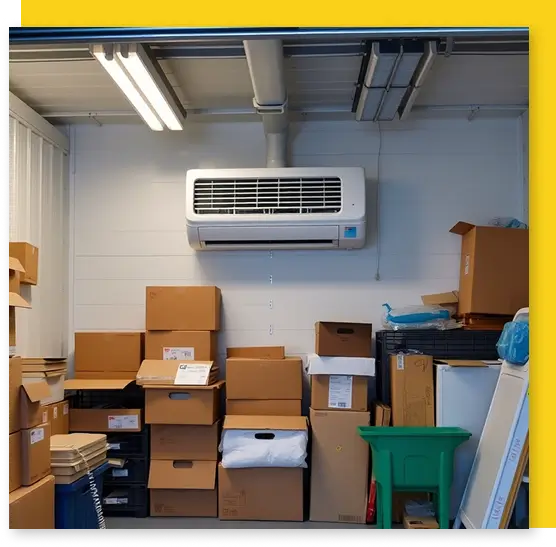
Quick decision tree
- Very high value & small size → Vault box
- Moderate value & larger items → Climate-controlled unit with insurance rider
- Irreplaceable documents → Digital copies elsewhere + originals in a vault
For SMEs: Insurance A–Z for Stored Stock
SMEs using self storage UAE or mini warehouse UAE space must match real inventory value to policy limits and understand how claims are settled. Here’s a plain-language guide to storage insurance UAE that prevents nasty surprises.
What’s actually covered (ask these questions)
- Insured property: Stock vs equipment vs fixtures—spelled out?
- Location: Is your specific unit address listed, or is it treated as a depository with different rules?
- Theft conditions: Is forcible/violent entry required? Are interior-theft scenarios covered?
- Transit: Are supplier deliveries covered to your unit? What about returns?
Open-stock vs sealed cartons (why it matters)
Some policies apply different limits or conditions when items are in open racks vs sealed cartons. If your operation mixes both, reflect that in the cover.
The underinsurance/average clause (how payouts shrink)
If your sum insured is lower than the true stock value, any claim can be reduced proportionally. Example: AED 800k true value, AED 500k insured. A AED 200k loss may only pay 200 × (500/800) = AED 125k. Avoid by revaluing frequently.
Monthly valuation cadence (practical workflow)
- Monthly count: Opening stock + receipts − sales − shrinkage = closing stock.
- Spot-check high-risk SKUs: Cycle-count weekly; compare to the system.
- Adjust the sum insured: If your average stock rises, request a mid-term limit change.
Documentation that speeds claims
Clean invoices, PoD, serial numbers, and timestamped photos; exportable CCTV and access control logs matched to incident times.
Red flags: Sums insured unchanged for 12 months despite growth; no clarity on theft conditions; vague transit or returns cover.
Conclusion: Make “24/7” Mean Safer Storage—Not Just Marketing
Self storage UAE can be genuinely secure—but only when brochure claims are backed by standards and proof. Before you book in self storage Dubai, storage units in Abu Dhabi, or anywhere in Sharjah, Ajman, RAK, Fujairah, or Umm Al Quwain, insist on three pillars: SIRA-compliant CCTV, graded intruder alarms, and verified Civil Defence monitoring (Dubai RMS / Hassantuk). Layer that with clear prohibited-items rules and the right storage insurance UAE, and you turn “24/7 surveillance” into real protection for your family, furniture, and business stock.Verify compliance on paper: Ask for a CCTV coverage map (1080p, identification/recognition views, ≥31-day retention), current AMC reports, and written proof of RMS/Hassantuk connection for the fire alarm Dubai system.
- Confirm alarm layers: Grade-3 detection (door contacts + motion + vibration/glass-break) with UPS backup and incident logs.
- Close insurance gaps: Call your insurer about items stored off-site; if needed, add a rider or tenant policy—especially for box storage UAE, furniture storage Dubai, or high-value goods.
- Document everything: Photo inventory, serials, receipts, and timestamps; keep copies of policies, certificates, and maintenance records.
If a provider resists showing documents, downplays insurance, or can’t demonstrate basic controls, treat it as a red flag and keep looking. With this checklist—and a few firm questions—you’ll choose a facility that’s not only convenient, but truly safe for your home moves, renovations, micro-inventory, or mini warehouse UAE operations.
UAE Self Storage Safety FAQs: 24/7 CCTV, Intruder Alarms, Civil Defence Monitoring & Insurance
What does “24/7 surveillance” actually mean in a UAE storage facility?
It should mean SIRA-aligned CCTV: 1080p cameras, correct coverage (entrances/exits, corridors, lifts, loading bays, car park/ANPR), clear signage, synchronized time stamps, and evidence retention (commonly ~31 days).
How can I verify Civil Defence monitoring (Dubai RMS / UAE Hassantuk)?
Request written proof, including a connection certificate or dashboard screenshot, along with AMC/maintenance certificates for the fire alarm system in Dubai.
Are intruder alarms required—and what grade should I look for?
Look for Grade-3 systems with layered sensors (door contacts, motion, vibration/glass-break), audible sirens with defined dB output, and UPS battery backup.
What items are prohibited in ordinary storage units under UAE rules?
Expect bans on flammables, gas cylinders, corrosives, explosives/fireworks, and other dangerous goods. These require special approvals and aren’t suitable for typical self storage UAE units. If a facility is casual about this, that’s a red flag.
Will my home contents insurance cover items in a storage unit?
Some policies cap “contents temporarily removed” (e.g., around 20%) and may exclude storage/depositories entirely. The safer route is a written endorsement or tenant/“storage insurance UAE” via your broker or the facility.
What does good access control look like (PIN vs card vs biometric + ANPR)?
Each user receives a unique credential (PIN/card/biometric), while movers are issued time-bound codes. Gates utilize ANPR tied to approved plates, and the site maintains audit logs (grants/denials/door-held-open) aligned with CCTV.
How do I judge if the CCTV is actually useful evidence?
Check for 1080p resolution, WDR for back-lit doors, coverage maps with identification/recognition viewpoints, no blind spots, ≥31-day retention, and the ability to export clips on demand. For self storage Dubai, ask to see a sample export from your corridor.
In box storage UAE, who is responsible for loss or damage?
Responsibility can shift by stage (pickup → transit → warehouse → redelivery). Demand a written chain of custody (tamper seals + barcode scans + photos + PoD).
For SMEs using a mini warehouse UAE, how do we prevent shrinkage?
Control the loading bay with ANPR and CCTV, ban “blind receiving,” match deliveries to ASNs, scan every item on receipt, use a returns cage with scans/photos, capture PoD at each handoff, and run weekly cycle counts on top SKUs.
Are high-value items (jewelry, art, collectibles) safe in a regular unit?
Often better in vault lockers. If you must use self storage Dubai, choose climate-controlled space (stable temp/RH ~40–60%), pack with archival materials, elevate off the floor, and add a specific insurance rider. CCTV alone isn’t enough.
